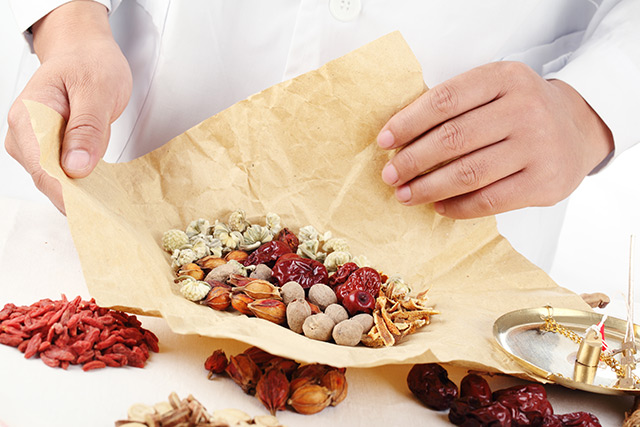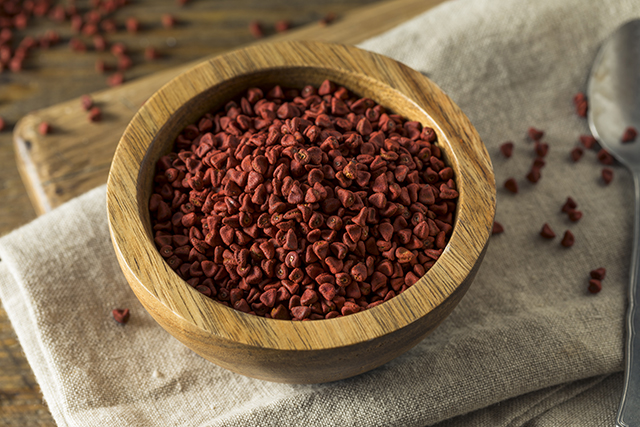Lyme disease: What it is, how to avoid it, and how to prepare for it
07/19/2018 / By Lance D Johnson

Approximately 30,000 people are diagnosed with Lyme disease each year in the U.S. Lyme disease is a vector borne disease spread by the black-legged (deer) ticks of the genus Ixodes. Deer ticks do not cause the infection; they are the vector. Vectors transmit an infectious pathogen into another living organism. The infection is caused when the pathogen enters the body unabated. In the case of Lyme disease, subjects are infected by a species of bacteria called Borrelia bergdorferi.
If the body is unprepared and ill-equipped to fight these infectious bacteria, the symptoms of Lyme disease can progress and ultimately become debilitating. Verifying a diagnosis is essential for proper treatment of any serious injury, illness, or disease. Not everyone who is infected with this bacterium will show symptoms of mild or serious Lyme disease, depending on how quickly and effectively their immune system responds. Antibodies respond differently per individual, depending on the health of one’s microbiome, hormones, blood, glands, and T-cell immune response.
Symptoms
In the early stages of the infection, symptoms often include malaise, unproductive fever, and muscle aches. A full diagnosis isn’t made until a particular rash appears. This rash, called a bulls-eye rash, congregates around the site of the tick bite. This rash, typically two inches in diameter, includes a red ring, encircled by a paler ring, and finally enclosed by a third, darker red ring.
As the disease progresses into the “early disseminated” stage, the initial rash may disappear and give way to similar rashes that occur on different spots of the body. The nervous system may become affected too, with pains occurring in the leg nerves, headaches, and a stiff neck. If the infection progresses, the bacteria may disrupt the nerves in the face and joints, causing aches and swelling in the affected areas.
100% organic essential oil sets now available for your home and personal care, including Rosemary, Oregano, Eucalyptus, Tea Tree, Clary Sage and more, all 100% organic and laboratory tested for safety. A multitude of uses, from stress reduction to topical first aid. See the complete listing here, and help support this news site.
If the infection is not controlled, a person may face the “late disseminated” stage of the disease, which includes swelling in the knees, insomnia, fatigue, memory loss, and personality changes.
Prevention
The best prevention is to avoid tick bites. This is much harder said than done, especially for those who live in high risk areas, such as the Northeast U.S., Pacific Northwest, and the Great Lakes region. The survival of the ticks depends on their success in seeking out mammalian hosts. The ticks start as larva, freshly hatched from an egg. These larvae seek out a small mammalian host first, by latching on and filling up with blood. At the larvae stage, their host is usually white-footed deer mice. These mice, previously infected with Borrelia bergdorferi, can share the bacteria with the ticks.
Once the ticks finish their mice blood meal, they detach, grow, and molt into a nymph. In order to become an adult, the nymph must find another blood meal. At this stage, they find a bigger mammal to latch onto, which may include humans. Between 24 and 48 hours after a tick’s bite, the infectious bacteria enter the bloodstream of the human host, causing infection. After the second fill up, the ticks detach, grow again, and molt into an adult. At the adult stage, the ticks will find a host one last time, fill up with blood, possibly infect the host, lay eggs, and then perish.
To avoid infection after a bite, it’s important to pull the tick off as soon as possible within the first 24 hours. Always check your body for ticks after hiking in a high risk area. To prep for this scenario, keep fine-tipped forceps in your first aid kit. If you do not have forceps, you can apply tape to the tick to pull them off your skin.
Treatment
Current medical advice for Lyme disease involves an accurate dose of antibiotics. According to the Centers for Disease Control (CDC), adults should be properly administered Doxycycline at 100 mg, twice per day, orally, for 10-21 days. Children are given Doxycycline at 4 mg per day orally for 10 to 21 days. Cefuroximeaxetil and Amoxicillin may also be used for treatment. The antibiotic treatment doesn’t always work, and sometimes requires further IV therapy with Penicillin G for three to four weeks. However, many of the symptoms persist even after antibiotic treatment. A full course of antibiotics may be recommended, but there is no evidence that this course of action helps every time. In fact, many patients continue to have fatigue, impaired cognitive function, and persistent joint pain, even after a full antibiotic treatment. In placebo-controlled clinical trials, most of the people who received placebos were in the same shape as those who were administered antibiotics for Lyme disease symptoms.
There are other ways to treat the symptoms of Lyme disease. The body would greatly benefit from an influx of nutrients, especially magnesium, zinc, potassium, and B vitamins. Restoration of the gut microbiome is essential for future success in warding off illness; therefore, probiotics should be considered. Colloidal silver and raw honey can help fight the infection. Silver nanoparticles are well known for controlling bacterial infections of all origins. Silver nanoparticles penetrate the cells walls of infectious bacteria, damaging their structure, weakening their membranes. Silver nanoparticles stop the bacteria’s cell division and DNA replication. Cannabis can help with the lingering symptoms of Lyme’s. Plant-based antimicrobials can help restore and speed up the body’s immune response. Lavender, Tea Tree, Oregano, and basil are great extracts to include in the diet during an infection.
For more on prevention and treatment of bacterial infections, visit Medicine.News.
Sources include:
Tagged Under: Antibiotics, antimicrobials, bacterial infection, camping, cannabis, deer mice, deer ticks, disease treatment, hiking, homesteading, immune system, infections, Lyme's disease, natural medicine, natural remedies, nervous system, off grid, outbreak, parasites, silver nanoparticles, swelling, tick bites, ticks, vector-borne disease




















